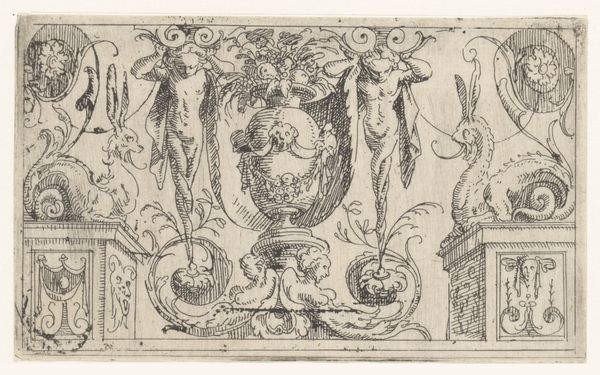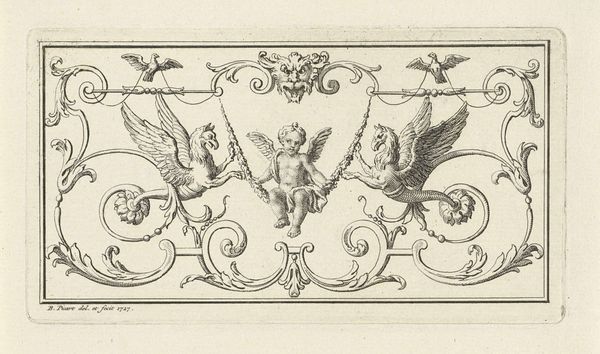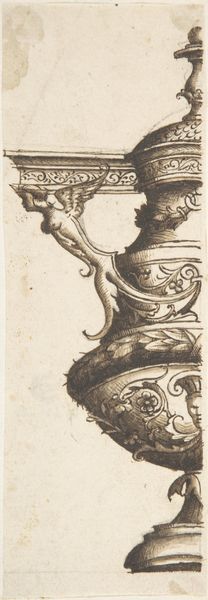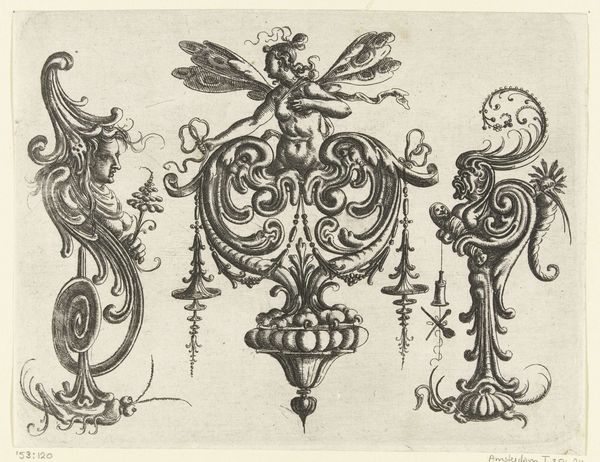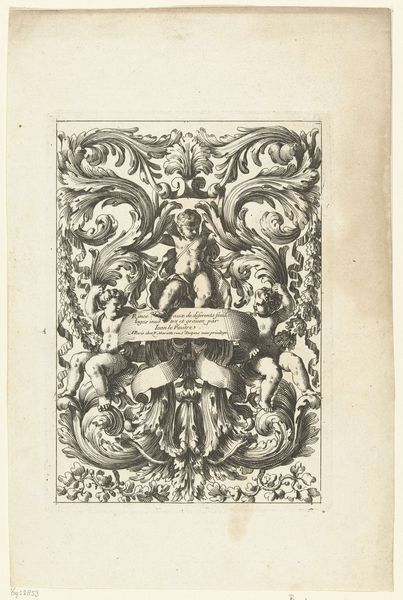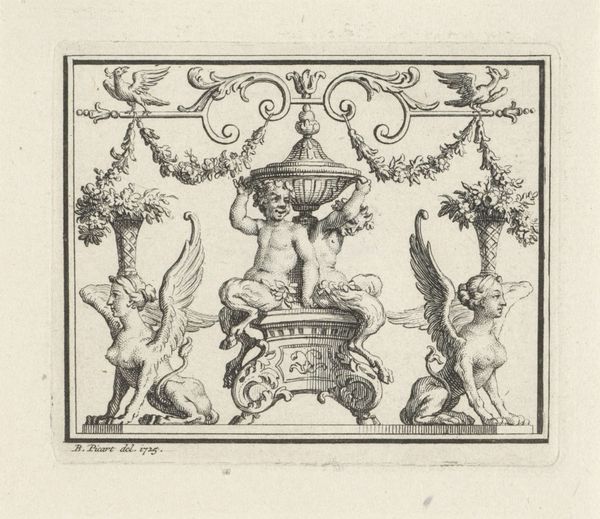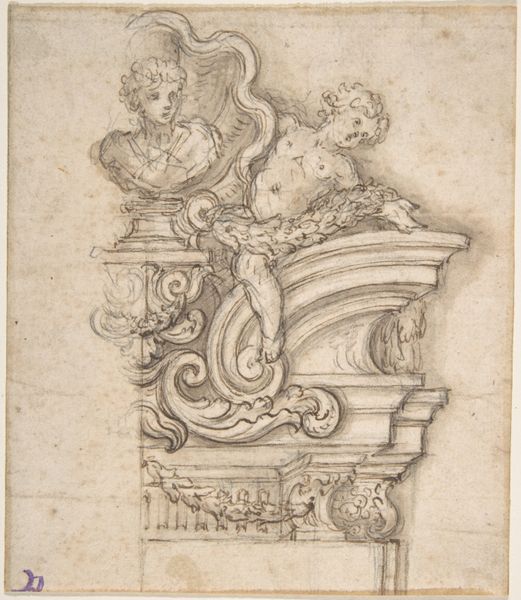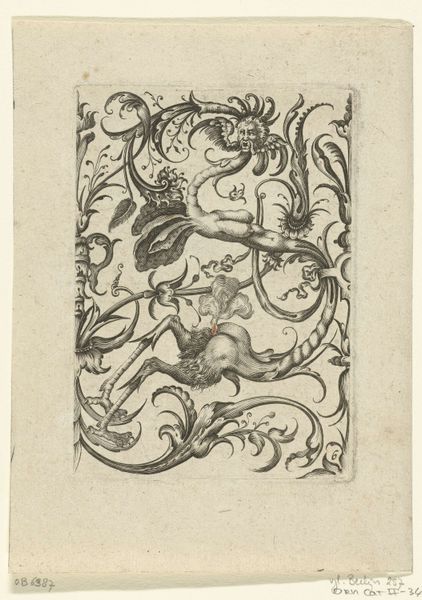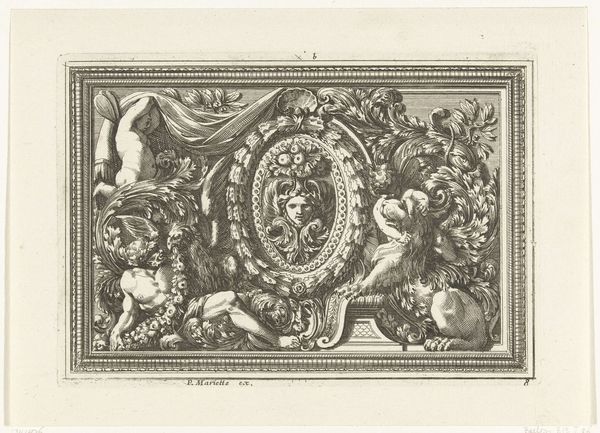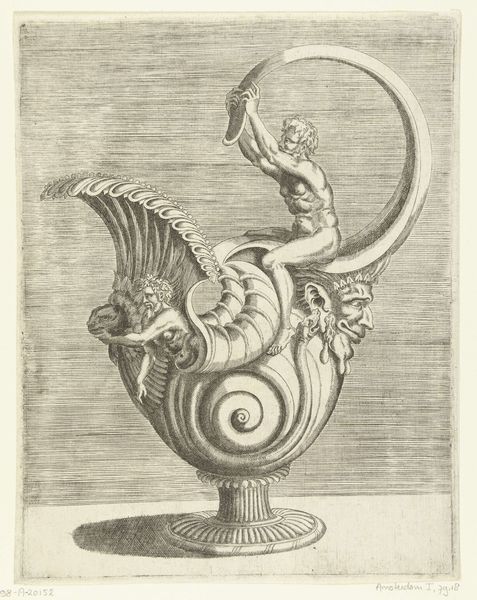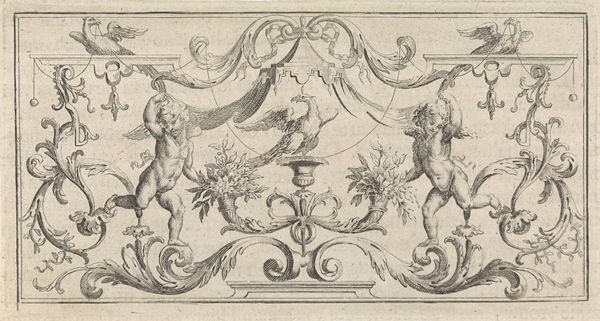
drawing, print, ink, pen, engraving
#
drawing
#
allegory
#
baroque
#
pen drawing
# print
#
mannerism
#
figuration
#
ink
#
pen
#
decorative-art
#
engraving
Dimensions: height 142 mm, width 163 mm
Copyright: Rijks Museum: Open Domain
Curator: Looking at this engraving, titled "Drie Consoles" (Three Consoles), created between 1573 and 1610 by Christoph Jamnitzer, what strikes you first? Editor: There's an undeniably whimsical air. The details are fascinatingly odd – a rabbit with a harp, a satyr-like figure blowing music. Curator: Indeed. It belongs to the Mannerist style, yet you can also see baroque influences emerging. It's important to recognize the context of this artwork within the decorative arts and the prevalence of allegory during that era. Each console design speaks volumes about symbolism and representation. The consoles themselves appear almost theatrical. Editor: I’m especially intrigued by the materials: ink and pen applied to create this print. How was it consumed? The line work is meticulously crafted—what were the modes of artistic labor here? Were these intended as patterns, and if so, how do they reflect social hierarchies? Curator: Precisely. They functioned as both design templates and displays of Jamnitzer's skill. The motifs are rich with symbolism of power, excess, and maybe even humor at the elite's expense. Consider that during this era, art wasn't divorced from function. There were not always clear distinctions between fine art, decorative art and craft in early print culture. Editor: It also brings to mind broader questions around craft and design—were designs available for public access and if so, did this change design principles? How much control over the finished project did the designer and commissioner retain? The relationship is quite fraught between artisanal making, production, class and gender Curator: It does, and thinking about how such images served to either democratize, or reify existing social values is something to contemplate. This piece truly provides rich material for those looking into the early stages of design and manufacture processes Editor: I completely agree. Investigating materiality alongside allegorical meanings has enriched my perspective on this image of production in early modern design history.
Comments
No comments
Be the first to comment and join the conversation on the ultimate creative platform.
